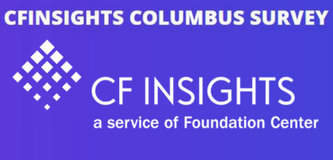Transparency and the Art of Storytelling
Mandy Flores-Witte is Senior Communications Officer for the Kenneth Rainin Foundation. This post is part of the Glasspockets’ #OpenForGood series done in partnership with the Fund for Shared Insight. The series explores new tools, promising practices, and inspiring examples showing how some foundations are opening up the knowledge that they are learning for the benefit of the larger philanthropic sector. Contribute your comments on each post and share the series using #OpenForGood. View more posts in the series.
Foundations are uniquely poised to support higher-risk projects, and as a result, failures can happen. Recently, I was searching online for examples on how to share the story about a grant that had some unexpected outcomes and found that, while the field strives to be transparent, it can still be a challenge to learn about initiatives that didn’t go as planned.
Communicating about a project doesn’t always have to happen in a scholarly report or detailed analysis, or by hiring experts to produce an evaluation. Sharing what you learned can be as simple as telling a story.
Embracing the Facts and Checking Our Ego
"Sharing stories can help you reach people in a way that statistics cannot."
When the Rainin Foundation funded our first public art installation in San Francisco’s Central Market, a busy neighborhood undergoing a significant economic transformation, we knew it was an experiment with risks. The art installation’s large platform, swing, and see saw were designed to get neighborhood residents, tech workers, customers of local businesses, and visitors — people spanning the economic spectrum—to interact. There’s no doubt that the project succeeded at bringing people together. But after seven months, it was relocated to a different part of the city because of complaints and safety concerns about the types of people and activities it attracted.
These issues were addressed at several community meetings—meetings that helped build stronger relationships among project stakeholders such as city departments, businesses, artists, local nonprofits, and neighbors. We were disappointed that the project did not go as planned, but we were amazed to see how one public art installation could spark so many conversations and also be a platform for exposing the city’s social issues. We knew we had to share what we learned. Or put another way, we saw an opportunity to be #OpenForGood.
Selecting a Medium for Sharing
We considered a formal assessment to communicate our findings, but the format didn’t feel right. We wanted to preserve the stories and the voices of the people involved — whether it was the job fair hosted by a nearby business to help drug dealers get out of the "game," the woman who sought refuge at the installation from domestic violence, or the nonprofit that hosted performances at the site. These stories demonstrated the value of public art.
We decided the most engaging approach would be to have our partners talk candidly about the experience. We selected Medium, an online storytelling platform, to host the series of "as told to" narratives, which we believed would be the most authentic way to hear from our partners. Our intention was to use the series as a tool to start a conversation. And it worked.
Taking Risks is Uncomfortable
The Rainin Foundation intentionally supported art in the public realm — knowing the risks involved — and we thought the discussion of what happened should be public, too. It was uncomfortable to share our missteps publicly, and it made us and our partners vulnerable. In fact, just weeks before publishing the stories, we were cautioned by a trusted colleague about going forward with the piece. The colleague expressed concern it could stir up negative feelings and backfire, harming the reputation of the foundation and our partners.
We took this advice to heart, and we also considered who we are as a foundation. We support cutting-edge ideas to accelerate change. This requires us to test new approaches, challenge the status quo, and be open to failure in both our grantmaking and communications. Taking risks is part of who we are, so we published the series.
Jennifer Rainin, CEO of the Kenneth Rainin Foundation, shares the year's pivotal moments in Turning Points: 2015.
We’ve applied a transparent approach to knowledge-sharing in other ways as well. To accompany one of our annual reports, the foundation created a video with Jen Rainin, our chief executive officer, talking about the foundation’s pivotal moments. Jen read some heartfelt personal letters from the parents of children suffering from Inflammatory Bowel Disease, explaining how their children were benefitting from a diet created by a researcher we support. Talking about scientific research can be challenging and complex, but sharing the letters in this way and capturing Jen’s reaction to them enabled us to humanize our work. The video was widely viewed (it got more hits than the written report), and has inspired us to continue experimenting with how we share our work.
Start Talking About Impact
I encourage foundations to look beyond formal evaluations and data for creative ways to be #OpenForGood and talk about their impact. While reports are important to growth and development, sharing stories can help you reach people in a way that statistics cannot. Explore new channels, platforms and content formats. Keep in mind that videos don’t have to be Oscar-worthy productions, and content doesn’t have to be polished to perfection. There’s something to be gained by encouraging those involved in your funded projects to speak directly and honestly. It creates intimacy and fosters human connections. And it’s hard to elicit those kinds of feelings with newsletters or reports.
What are your stories from the times you’ve tried, failed, and learned?
-- Mandy Flores-Witte

